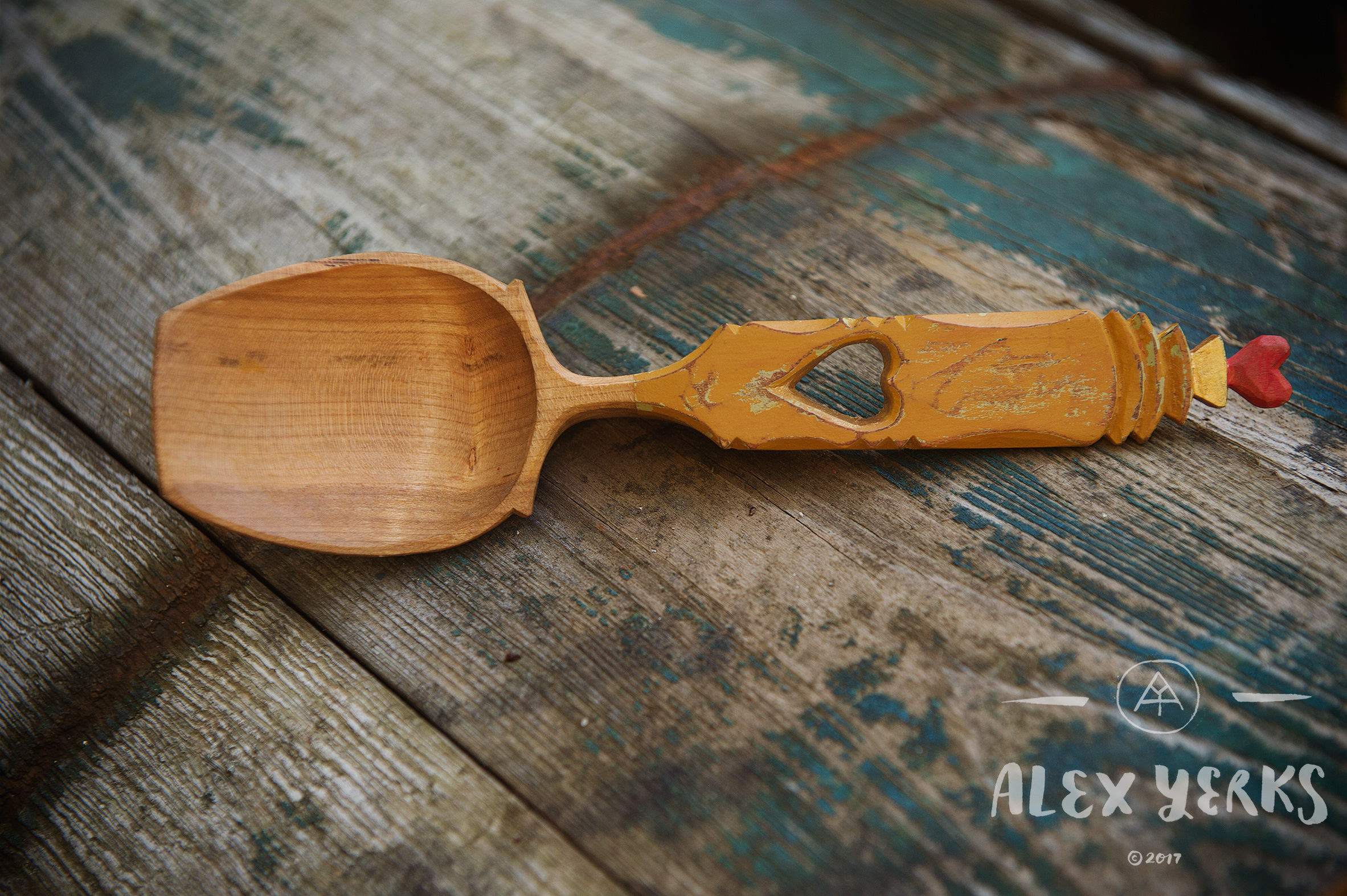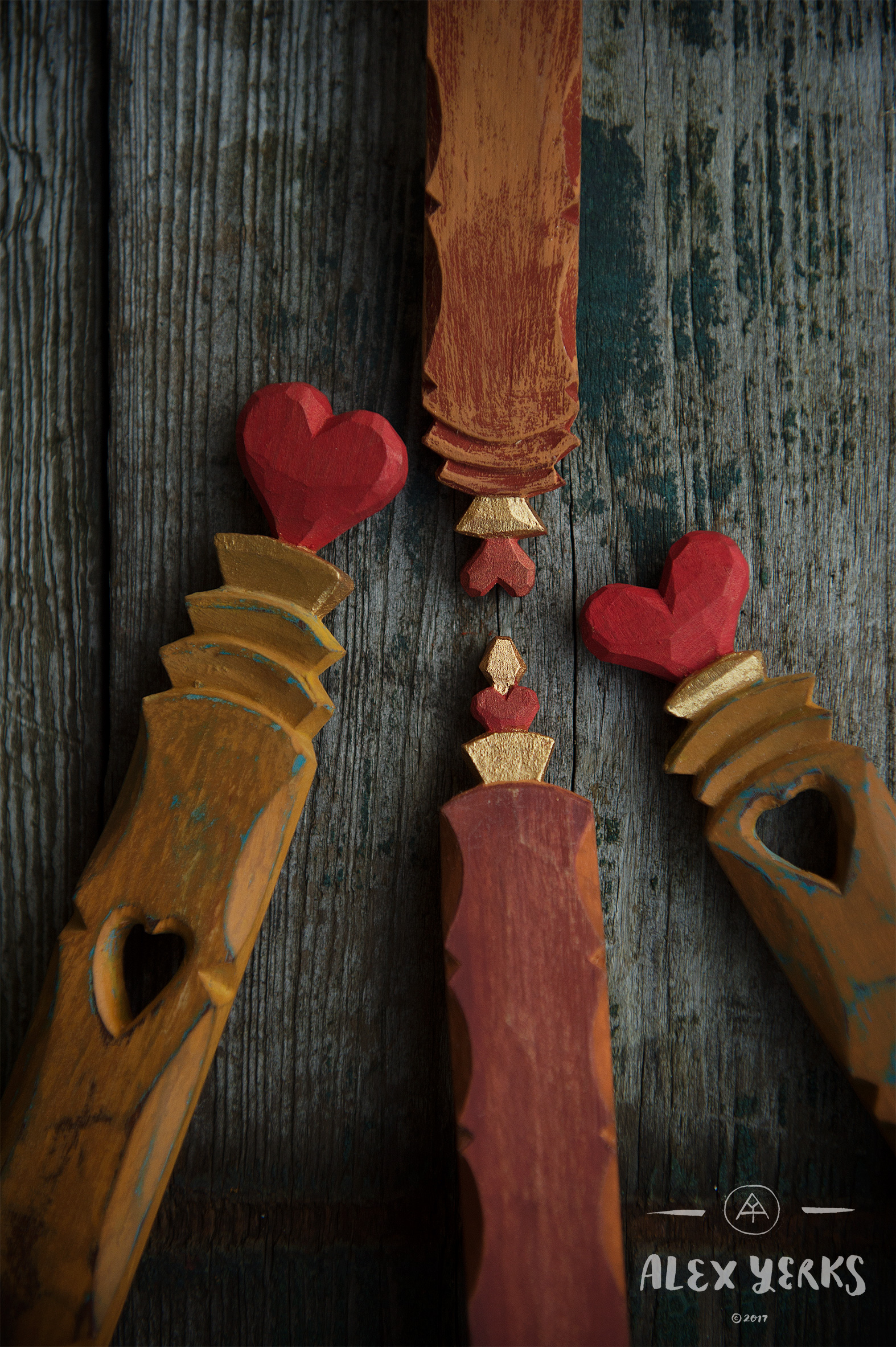Layers Are Like Scenes
I’ve been experimenting the past couple of nights with different pigments and finishes with paint. Layers have meanings and there are different moods reflected here. Really these are best seen in hand as there are very intricate details and textures throughout each spoon. Each layer is a scene.
I've been using milk paint for years now. Often I'd go paint crazy and everything got a dash of the stuff. Then I'd put it away for a while and go with the minimalist philosophy that the wood is good and a properly carved spoon should be the main selling point. Not a bunch of tricks.
Looks like I'm back in it. This fall I've been focused on exploring ideas again. I have so many things sketched or scribbled into old notebooks. It's nice to actually dust off old ideas and bring them into the light.
This latest batch of spoons are really special. They're starting to come together. You can see the evolution of this from my last post
I've always been into layers, both philosophically and physically. A lot of projects have an element of risk involved at each stage. I think this part of making is unique. At every turn, you never know what's around the corner. Grain changes, a tool may take off more than you bargained for, or your mind is in just the right place and you're seeing this sort of magic unfold right in front of you.
So you've carved a beautiful spoon and now you want to decorate it? The potential for disaster is mighty. I do not sand anything I carve. So the delicate and controlled finishing cuts I get are really important to me. They must remain intact. But with milk paint, it's a textured surface and sometimes rough depending on how you mix it, humidity, and the different pigments added also play a role in this controlled chaos. So you have to knock some back with something. These are some things I've been experimenting with. I'm going to start focusing part of the carving courses on this process.
Sourcing your own pigments can be fun, or they can be found in shops as well. But I warn you it's another rabbit hole to fall into.
I should mention that I don't always use milk paint. Sometimes I'll use acryllic, sometimes even mixtures of oil paint.
I like the idea of pushing my patience. This isn't the job for someone that wants a premixed tube of paint. I often grow frustrated in how finicky it can be, and at times it can just be a bad mix of paint that's giving you trouble. But I have always worked good under certain times of stress. The first day I painted this batch I wasn't happy. I laid in bed that night wondering if I should've not bothered. But now it's too late, I can't just remove the paint because it'll destroy the facets I carved in.
The paint in combination with the color and contrast of the wood just didn't sit right with me. Plus all my facets have been softened by the hue.
I decided tomorrow when my head is in the right zone I'll have to improvise and go with it.
I'm not really intending for these to look distressed. Each spoon is sort've like a song. Each is a performance in the end. It starts with an axe and a dance around the chopping stump. Ends with a perfect curl of wood peeling off the sharp edge of your knife. Sometimes a dash of color or texture to finish the deal.
So there is a bit of that gamble and risk but it's what keeps the process alive for me.
Oddly enough these colors each remind me of the backdrop I carve in everyday. The leaves on the trees are changing fast, and the nights are growing colder. Autumn is swooping in.
Another week I decided to use similar shades but in different orders and final finishing. I'm realizing now how obvious it is that this is a direct representation of my surroundings. It's early autumn and I'm looking out over the forest everyday when I carve. At the time I was clueless wondering what colors to make when they were right out in front of me.
Working on these things takes a considerable amount of time and effort. I really respect the other makers that spend so much of their lives pulling out their hair and tossing the many bad spoons into the wood stove. Lots of ideas have been picked up from some folks with not even a nod in their direction lately. I think if you're trying to be a part of a community you should prioritize your thinking away from the dollar and onto respecting inspiration.
and the process goes on another day. Starts at the chopping block and ends with the knife.
October 19th 2017,
It's been interesting to write here in sections instead of quickly smashing out a post. After all the original post was about evolution and my thought process. Here are even more spoons I've experimented with. Each session I try something a bit different.
I've noticed that more and more everyone's spoons just start to look the same. I decided to push myself harder to come up with something even more unique.
This is part of my “chase.”
Something worth mentioning is lighting. At Spoonfest the past two years I taught a course themed around "Shooting Your Spoon" which is aimed at photographing your work and how to look for that great image. It's learning to understand the relationship between light & shadow, as well as how to chase it. These two photos were taken a half hour apart. I often get asked what filters I use, which will get me to instantly roll my eyes right out of their sockets. I don't use filters or tricks. I just use a digital camera that is a close to perfect version of an analogue film camera. I shoot manually, and raw meaning there are no settings. When it hits photoshop I conduct the job just like any photographer would in a dark room. Exposure, sharpening, contrast, and sometimes I crop. But that's quite rare, I'm one to crop in camera, meaning you see the whole frame.
Anyways back to lighting! So the left image is sitting on an old wooden barrel in open shade under a tree. The direct sun isdiffused by the leaves and shadows behind the tree. The spoon on the right is under the same tree just as the sun is going down. Or some have known it as "The Golden Hour" which really means hurry up you have ten minutes of ever changing glorious golden beams of light gracing you. No filter, nothing added.. just waiting for the sun and knowing when to pounce. I won't get too deep into this but there are pros and cons. One spoon seems a bit more red than the other which may throw off a customer for example. Now I could color correct this in post, or change my camera's white balance but I don't shoot like that unless we're shooting some fashion in NYC where a fancy handbag or expensive outfit has to look exactly how it does in real life, as well as the printed magazine page. The spoon in the middle was taken between the two others.
But correcting this would render it a bit sterile...
Not sure how to put it any other way but I hope my post can be used as inspiration for folks to come up with their own beautiful ideas. It's much more rewarding than undercutting someone else's work.
Keep on carving!
-Alex









































